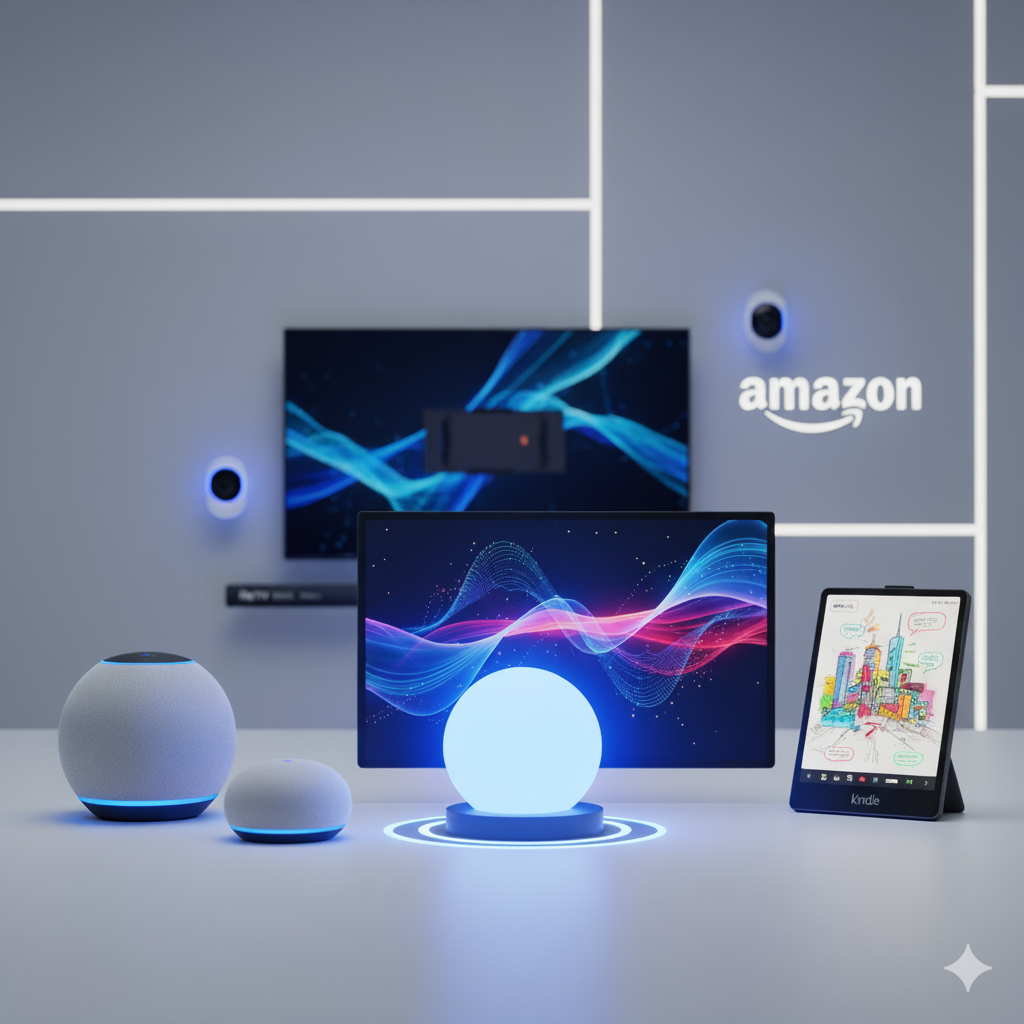Amazon’s 2025 Hardware Event: Alexa+ Ushers in a New Era of Smart Living

Introduction
Amazon has once again raised the bar for smart home technology with its 2025 Hardware Event, unveiling a wave of innovative products powered by Alexa+, the company’s most advanced AI assistant to date. This year’s lineup marks a major shift in how Amazon envisions the future of connected living—where devices don’t just respond but understand and anticipate user needs.
What’s New: Highlights from the Event
1. Alexa+ — The Heart of Amazon’s New Ecosystem
At the center of this year’s announcements is Alexa+, a more powerful and conversational version of Amazon’s voice assistant.
Using generative AI, Alexa+ can now understand context, remember previous interactions, and hold more natural conversations.
Key Alexa+ features include:
- Contextual follow-ups (“Play that song again — who sings it?”)
- Smarter cross-device control for home and media management
- Enhanced on-device processing for faster, more private responses
- Early access for Prime members, with wider rollout planned in 2026
Amazon has also introduced its new AZ3 chip and Omnisense sensor technology, which allow devices to process more information locally. This means faster responses, better privacy, and smarter adaptation to users’ routines — from recognizing who’s speaking to automatically adjusting home lighting or temperature.
2. Echo Devices — Smarter and More Adaptive
Amazon refreshed its Echo lineup with four new models designed around Alexa+.
-
Echo Dot Max and Echo Studio deliver enhanced sound quality and improved voice detection.
-
The new Echo Show 8 and Echo Show 11 feature upgraded displays and cameras, capable of recognizing users and adjusting what’s shown — like personalized widgets, to-do lists, or news updates.
These devices make Alexa+ feel more like a personal assistant and less like a voice-activated tool.
3. Kindle Scribe Color — Reading Meets AI
For book lovers, Amazon launched the Kindle Scribe Color, the first Kindle with a color e-ink display and stylus support.
Beyond aesthetics, this upgrade integrates AI-powered tools — users can now summarize notes, search within handwriting, and even use the new “Ask This Book” feature to get quick recaps or insights from what they’re reading.
This shift shows Amazon’s vision of turning Kindle into an intelligent reading companion rather than just a digital library.
4. Fire TV — Entertainment Gets Intelligent
The Fire TV lineup also received an upgrade, now running on Amazon’s new Vega OS for faster performance.
With Alexa+ built directly into the system, users can search shows, control smart devices, or ask AI-driven questions — all while watching TV. The Fire TV interface learns user preferences, making content discovery more personalized and intuitive.
5. Ring & Blink — AI for Home Security
Amazon’s home security products, Ring and Blink, got smarter too.
The new Ring cameras come with “Retinal Vision” for sharper and clearer footage, even in low light. AI features like Familiar Faces help identify known visitors, while the “Alexa+ Doorman” can automatically greet guests or handle deliveries.
Blink cameras also received upgrades with better motion detection, person recognition, and wider viewing angles — furthering Amazon’s vision of a connected and secure home.
Why It Matters
Amazon’s 2025 event signals a strategic pivot—from hardware-focused innovation to AI-centric ecosystems. The company’s vision for Alexa+ goes beyond convenience: it aims to make devices proactive companions that learn and evolve with users.
- AI as the platform: Amazon wants to make Alexa+ the center of the connected home, not just another assistant.
- Edge computing advantage: New AZ3 chips process more commands locally, improving privacy and reducing latency.
- Unified ecosystem: Alexa+ bridges Echo, Fire TV, Ring, and Kindle for a cohesive, personalized experience.
Risks, Challenges, & Watch Points
-
Legacy Device Exclusion
Some older Echo models won’t support Alexa+ natively, meaning users may have to upgrade hardware. This can create friction or user backlash. -
Overpromising on AI
Conversational AI is still nascent. Amazon risks making bold claims about proactive features (anticipation, context) that may underdeliver in real-world conditions. -
Privacy & Trust Concerns
Given the range of sensors (camera, radar, motion), users will demand clarity: Where is data processed? How long is it stored? Can users disable features? Missteps here can erode trust fast. -
Ecosystem Lock-In Critique
Amazon’s approach may be seen as too walled-in. Users who prefer cross-platform flexibility might resist being fully in the Amazon fold. -
Hardware Execution & Quality
Each product line will face scrutiny: audio fidelity in Echo, latency/UX in Fire TVs, visual quality in Ring, readability in color e-ink displays. A single category failure can hurt credibility.
Conclusion
The 2025 Hardware Event reflects Amazon’s bold redefinition of smart living. With Alexa+, the company is pushing toward a world where AI is embedded into every layer of our daily environment—from entertainment to security to productivity.
If successful, Amazon won’t just be a player in the smart device market—it could redefine what “smart” truly means in our homes.







